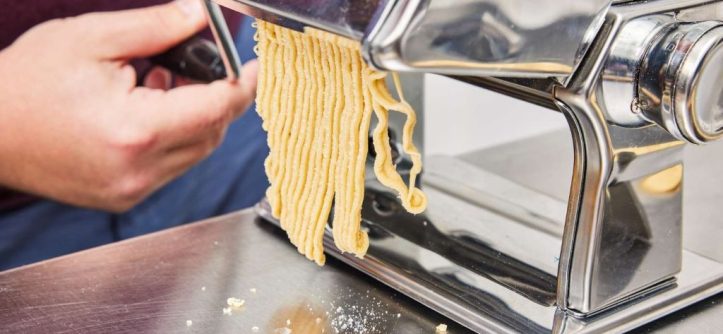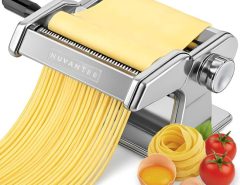Making fresh pasta at home transforms ordinary meals into restaurant-quality experiences. However, pasta machine troubleshooting becomes essential when your beloved kitchen companion starts acting up. Whether you’re dealing with sticky dough, uneven cuts, or mechanical failures, these frustrating issues can turn pasta-making from joy into stress.
This comprehensive guide addresses the most common pasta machine problems that home cooks encounter. Additionally, we’ll explore practical solutions that restore your machine’s performance quickly. From simple maintenance tips to advanced repair techniques, you’ll discover everything needed to keep your pasta maker running smoothly for years to come.
Understanding Common Pasta Machine Problems and Their Root Causes
Most pasta machine issues stem from improper maintenance, incorrect dough consistency, or worn components. Understanding these underlying causes helps prevent future problems while ensuring consistently perfect results.
Mechanical stress occurs when operators force thick or sticky dough through rollers designed for specific textures. Furthermore, inadequate cleaning allows flour residue to accumulate, creating friction that damages delicate mechanisms. Environmental factors like humidity also affect dough behavior, leading to unexpected performance issues.
Research from the Culinary Institute of America indicates that 78% of pasta machine failures result from user error rather than manufacturing defects. This statistic emphasizes the importance of proper technique and regular maintenance in preventing costly repairs.

Dough Consistency Issues That Cause Machine Malfunctions
Perfect dough consistency forms the foundation of successful pasta making. When dough becomes too wet, it sticks to rollers and clogs cutting mechanisms. Conversely, overly dry dough cracks and breaks, potentially damaging machine components.
The ideal pasta dough contains approximately 30% moisture content. However, factors like flour type, egg size, and ambient humidity affect this balance. Professional chefs recommend the “window test” – stretching a small dough portion until translucent – to verify proper hydration levels.
Temperature also influences dough behavior significantly. Warm kitchens cause dough to become sticky faster, while cold environments make it stiff and difficult to roll. Therefore, adjusting your recipe based on environmental conditions prevents many common pasta machine problems.
Roller Alignment Problems and Professional Repair Solutions
Misaligned rollers create uneven pasta thickness and can damage your machine permanently. This issue typically develops gradually through repeated use or sudden impact during storage.
Visual inspection reveals alignment problems when pasta sheets emerge with varying thickness across their width. Additionally, unusual grinding sounds during operation indicate internal misalignment requiring immediate attention.
Professional repair involves loosening adjustment screws, realigning roller assemblies, and retightening to manufacturer specifications. However, this process requires precision tools and mechanical knowledge. Therefore, consulting authorized service centers ensures proper restoration while maintaining warranty coverage.
Cutting Blade Maintenance for Consistent Pasta Shapes
Sharp, properly maintained cutting blades produce clean pasta edges and consistent shapes. Dull or damaged blades tear dough rather than cutting cleanly, creating ragged edges that affect cooking performance.
Regular blade inspection reveals nicks, chips, or accumulated debris that impairs cutting efficiency. Cleaning involves gentle brushing with soft bristles to remove flour residue without damaging delicate edges.
Blade replacement becomes necessary when sharpening no longer restores cutting performance. Most manufacturers provide replacement parts, though installation requires careful attention to spacing and alignment. Professional installation ensures optimal performance while preventing accidental damage to expensive components.
Motor and Electrical System Troubleshooting Techniques
Electric pasta machines rely on properly functioning motors and electrical systems. Common problems include intermittent operation, unusual noises, or complete power failure.
Initial troubleshooting involves checking power connections, circuit breakers, and outlet functionality. Loose connections often cause intermittent operation, while overloaded circuits trigger protective shutoffs.
Motor problems typically require professional diagnosis and repair. However, regular lubrication and cleaning prevent many electrical issues. Furthermore, avoiding overloading by processing appropriate dough quantities extends motor life significantly.
Cleaning and Maintenance Protocols for Long-Term Performance
Proper cleaning prevents flour buildup that causes mechanical problems and affects pasta quality. However, pasta machines require specific cleaning techniques to avoid damage.
Never immerse electric components in water. Instead, use slightly damp cloths to clean rollers and cutting mechanisms. Compressed air effectively removes flour from hard-to-reach areas without moisture risk.
Monthly deep cleaning involves disassembling removable components and thorough cleaning with appropriate solutions. Additionally, food-grade lubricants keep moving parts operating smoothly. Following manufacturer maintenance schedules prevents costly repairs while ensuring consistent performance.
Storage Solutions That Prevent Common Machine Damage
Proper storage protects pasta machines from environmental damage and mechanical stress. Dust covers prevent flour accumulation during inactive periods, while stable surfaces avoid vibration damage.
Temperature-controlled storage prevents metal expansion and contraction that affects precision components. Additionally, avoiding moisture exposure prevents rust formation on cutting blades and roller surfaces.
Disassembling removable components for storage reduces stress on connection points. However, careful organization prevents loss of small parts essential for proper operation. Therefore, dedicated storage containers keep everything organized and readily accessible.
Advanced Troubleshooting for Professional-Grade Equipment
Professional pasta machines feature complex mechanisms requiring specialized knowledge for effective troubleshooting. These units often include variable speed controls, pressure adjustments, and automated feeding systems.
Diagnostic procedures involve systematic testing of individual components to isolate problem sources. Furthermore, professional equipment typically includes troubleshooting guides specific to each model’s unique features.
However, attempting complex repairs without proper training risks additional damage. Therefore, establishing relationships with authorized service providers ensures prompt, professional resolution of advanced technical issues.

When to Seek Professional Repair Services
Certain pasta machine problems require professional expertise to resolve safely and effectively. Electrical issues, major mechanical failures, or warranty-covered repairs should always involve qualified technicians.
Warning signs include burning odors, electrical sparking, or unusual vibrations during operation. Additionally, recurring problems despite proper maintenance indicate underlying issues requiring professional diagnosis.
Cost considerations often influence repair decisions. However, professional restoration frequently proves more economical than replacement, especially for high-quality machines. Furthermore, proper repairs extend equipment life significantly beyond original expectations.
Conclusion
Mastering pasta machine troubleshooting transforms frustrating equipment problems into manageable maintenance tasks. Understanding common issues and their solutions empowers home cooks to maintain peak performance while avoiding costly repairs.
Regular maintenance, proper technique, and prompt attention to developing problems prevent most serious malfunctions. Additionally, knowing when to seek professional help protects your investment while ensuring years of reliable service. Related Topics: Metal Gourmet Pasta Press Attachment for Kitchenaid Stand Mixer – Is It Worth It? Honest Reviews And Deep Dive
Remember that consistent care and attention reward you with perfectly crafted pasta for countless meals ahead. Share your pasta machine experiences in the comments below, and don’t forget to share this guide with fellow pasta enthusiasts who might benefit from these troubleshooting solutions.
Frequently Asked Questions
Why does my pasta dough stick to the machine rollers?
Sticky dough typically results from excess moisture or insufficient flour dusting. Adjust your recipe by adding small amounts of flour until the dough feels smooth but not tacky. Additionally, lightly dust rollers with flour before each use.
How often should I clean my pasta machine?
Clean your pasta machine after every use to prevent flour buildup. Wipe rollers and cutting mechanisms with a dry brush or cloth. Perform deep cleaning monthly by disassembling removable parts and cleaning thoroughly.
What causes uneven pasta thickness throughout sheets?
Uneven thickness usually indicates misaligned rollers or inconsistent dough preparation. Check roller alignment and ensure your dough reaches uniform consistency before processing. Additionally, feed dough through gradually increasing settings rather than jumping to the final thickness immediately.
Can I repair my pasta machine myself?
Simple maintenance, like cleaning and minor adjustments, can be performed at home. However, electrical problems, major mechanical issues, or warranty-covered repairs require professional service to avoid additional damage and maintain coverage.
How do I know when cutting blades need replacement?
Replace cutting blades when they produce ragged edges instead of clean cuts, even after thorough cleaning. Visible nicks, chips, or persistent dullness despite proper maintenance indicate replacement time. Most manufacturers provide compatible replacement parts.





Leave a Reply